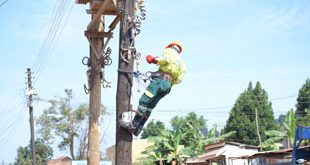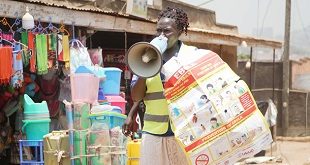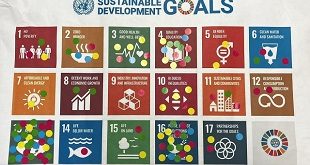
By Morris Ogenga-Latigo
The fact about oil in Acholi should be made widely known to Ugandans
There has been reluctance on the part of Acholi people to engage in the head-spinning oil pipeline debate that various newspapers have covered over the recent past (see `Oil firms, govts differ on export pipeline’, The Observer, May 27, 2015; `Uhuru and Museveni strike deal on route for oil pipeline’, The East African, August 11, 2015; `Oil firms prefer Tanga pipeline route to Lamu’, The East African, September 13, 2015; `Total’s bid for a Tanzania pipeline route rejected’, The East African, September 19,2015; `Tanzania, Uganda sign Tanga oil pipeline agreement’, The East African, October 13, 2015; `Tanzania’s route throws race for Uganda’s oil pipeline wide open’, The Observer, October 15, 2015; `Fight over oil pipeline’, The Independent, October 27, 2015).
Our reluctance is because, under the Joint Acholi Leaders’ Forum (JALF), we in June 2014 submitted a memorandum to President Museveni on various issues on oil. They included Acholi as a crucial host to the oil finds that most Ugandans do not know about, the loop-sided planned development of Oil & Gas infrastructure that leaves Acholi and the North completely out of the picture, our proposal for a “Trans-North Oil Export Pipeline”, and the questions of royalty and representation on national oil bodies to engender equity and a sense of shared ownership.
We await the response of the President and his government to us before publically airing our concerns. However, while we wait even if 16 months have elapsed since, current debate on the oil pipeline route and planned oil infrastructure development being pushed on the falsehood that Uganda’s largest oil finds are in Bunyoro, leaves us with no option but to speak out.
ATWCOG and its role
In November 2013, Acholi leaders, under the JALF, instituted the Acholi Technical Working Committee on Oil and Gas (ATWCOG). This committee was tasked to, among others, “study, on behalf of the Acholi people, all issues regarding oil and gas in Acholiland- taking into account all government policies, laws and actions so far taken in order to establish a knowledge-based framework for objective engagement with government, oil companies, all stakeholders, and Ugandans generally, on matters of oil and gas in the Acholi Sub-region”.
To build its knowledge, ATWCOG scrutinised all manner of documents; traversed the country; and visited and met with key stakeholders- Government, Petroleum Exploration and Production Department (PEPD), NEMA, UWA, Bunyoro Kingdom and its local governments, CNOOC, Total and Tullow oil companies and NGOs.
The committee presented its findings to a gathering of Acholi leaders at the “Second Acholi Conference on Oil and Gas” held in Gulu on May 9, 2014. President Museveni was invited to open the meeting but could not make it because of prior engagement.
Of the various issues presented, discussed and agreed upon at that conference, the most relevant to ongoing debates on oil in Uganda were: oil discoveries in Acholi, oil infrastructure and the export pipeline route, and royalty and representation on national O&G bodies.
Oil discoveries in Acholi
In the search for information on oil finds in Acholiland, ATWCOG could not access official records on, nor obtain clear answers from PEPD officials to the question of “how much oil has been discovered in Acholi”. The committee relied on anecdotal evidence.
Firstly, when Heritage that operated the A1 block in Acholi divested its interest to Tullow/Total, the over US$2billion paid told us that Acholi had huge oil potential. At that time, the declared oil finds was around 2.3 billion barrels, and none from Acholi. Upon Total’s takeover, and with no new major finds announced in Bunyoro or elsewhere, however, the declared discoveries jumped rapidly first to 3.5 billion barrels and later to the current 6.5 billion barrels, but without the sources of those additional barrels being declared.
Secondly, justification for locating the Oil Refinery in Kabaale, Hoima district, was that it would draw crude from Kingfisher and other oil fields then declared discovered in Bunyoro. When we accessed the Foster Wheeler report on the refinery, however, it turned out that, except for the first few years of its operation when it will depend on crude from the Kingfisher field, for much of its 30-40 year life the refinery will actually depend 70-90% on crude from Acholi oil fields, specifically Jobi and Jobi East fields (see graph).
Interestingly, while on official oil maps these oil fields are referred to as “Jobi” and “Jobi East”, in the Foster Wheeler refinery report, the oil fields are referred to as “Buffalo” and “Buffalo East”- Anglicised “Jobi” names that non-Lwo speakers would not know!
On the basis of the above, we can safely surmise that the oil fields of Acholi possibly account for up to 4 billion barrels, i.e. 60%, of Uganda’s declared oil finds. Lyec field alone contains more than 1 billion barrels of oil and these oilfields (Lyec, Jobi, Jobi East) are the most accessible in depth. Some are interconnected and actually form huge pools of oil deposits the extraction of which will require very few output pump-heads. So why have these facts about oil in Acholi not been made widely known to Ugandans?
Oil Infrastructure and the pipeline debate
Currently, most Ugandans are only familiar with the Hoima Oil Refinery project because of its advanced stage and, to some extent, because of controversies surrounding acquisition of and compensation for its land. What most people do not know is that as now planned, Bunyoro will also host most extraction pipelines and two Central Processing Facilities (CPFs) to process extracted crude. Both the crude export pipeline and refined petroleum products pipeline will also originate from and traverse Bunyoro.
Sadly, in spite the bulk of Uganda’s oil finds being in Acholi, none of the above facilities will be in Acholi or the North. Acholi will have only few oil extraction pump-heads in Murchison Falls National Park, and service centres on the banks of River Nile.
In our memorandum, the Acholi fully support location of the oil refinery in Hoima, and channeling of oil from Acholi to it. They also fully support building of the petroleum products pipeline from Hoima to Bulooba, Kampala, to serve our industrial heartland and ensure easy access to Rwanda, Kenya and other East African destinations.
On the same principle, however, Acholi people questioned the logic of why none of the key oil infrastructures, particularly Central Processing Facility and crude oil export pipeline, are sited in their land or the North. They therefore proposed a “Trans-North Oil Export Pipeline” as the only objective, cost-effective and development-spurring option for the export of Uganda’s crude. In doing so, our people relied solely on objectivity.
The Trans-North Oil Export Pipeline (see Map) would originate from Nwoya district, where a Central Processing Facility would be built to process oil from Nwoya and Buliisa oil fields. It would then run east, through Acholi and Karamoja sub-regions, to Kenya, and connect to Kenya LAPSSET pipeline in Turkana’s Logichar oil field.
Whereas none of Uganda’s oil pipeline proposals so far considered includes this North option, the justifications for this route are too glaring not to have been seen by government and all the technocrats in the oil sector. Since a recent statement by the Ministry of Energy Permanent Secretary, Kabagambe-Kaliisa, was that: “the objective is to select a route that will result in the lowest unit transportation cost and constitute the most viable option for the pipeline project”, the Acholi people are at a loss as to why this route has not been evaluated.
Firstly, Logichar, the centre of Kenya’s oil deposit, is 2o22’ North, while Acholi oil fields, where the bulk of Uganda’s oil finds are, also lie between Paraa (2o18’North) and Anaka (2o26’North). The two oil fields are virtually on the same parallel. Since no CPF has been built in Bunyoro yet, and one can be built in Nwoya to process the vast oil from Acholi for export on a straight pipeline route directly to Logichar, what logic drives the current plan to first pump oil from Acholi more than 100km south to Hoima (1026’ North), and then back north to Logichar to connect to Kenya’s LAPSSET pipeline?
Secondly, Uganda’s oil is waxy and requires regular heating to aid pipeline flow. The Trans-North pipeline would traverse much warmer and much drier parts of Uganda and Kenya. This warmer climate will significantly reduce cost of heating the pipeline to maintain crude flow. Beside, much of the route through the North is flat, compared to the undulating landscapes of southern Uganda, which further reduces costs of constructing the pipeline and pumping crude along it.
Thirdly, the Trans-North oil pipeline would run through thinly populated and largely undeveloped Acholi and Karamoja subregions. Land acquisition and assets compensation will not, therefore, be major impediments. If acquiring land for the Kabaale Oil Refinery in a relatively remote and lowly populated part of the country caused so much dispute and resistance, how worse off will the challenge be to acquire land to build a crude export pipeline along the densely populated and highly developed routes east to Mombasa or south to Tanga?
Fourthly, oil exploration is an ongoing process not only in western Uganda but in northern Uganda too, with the East Rhino Camp Basin in West Nile/Madi now being concessioned while the Kadam Basin in Karamoja and Lake Kyoga Basin in Lango are also being studied. Oil discovered in these basins will easily be moved using this pipeline with limited additional pipeline extension costs.
Lastly, establishment of the Trans-North Oil Export Pipeline and related infrastructures is the single most important way of drawing direct long-term benefits of oil extraction to Acholiland and the Greater North, and spreading the benefits of oil and gas extraction country-wide. The refinery and oil products pipeline and a CPF and associated infrastructures will be in western, southern and central Uganda, while the North will have a CPF and the crude export pipeline will run from northwest to northeast.
At the regional level, if the LAPSSET plan is adopted, a new highway and railway line will also be built along the pipeline. This will help secure the pipeline, open up the Greater North for investments and economic transformation, and provide an alternative trade route for Kenya, Uganda, South Sudan and DR Congo. Activities along this route will also permanently transform local economies and spur urbanisation and development transformation.
The Trans-North pipeline also offers opportunity for an integrated Eastern Africa-wide oil exploitation approach, with Uganda as the hub. Given the insecurity in South Sudan, it is much safer to extend their pipeline along the secure and easier to protect Juba-Gulu road to link with Uganda’s pipeline in northern Uganda. If DR Congo strikes oil, its natural oil export route will also be through Nebbi and Nwoya.
Furthermore, this pipeline, as part of the LAPSSET complex, will be a huge joint investment and long-term development commitment that will greatly drive regional economic integration. Coupled to this will be an integrated security guarantee arrangement around which political integration can be built.
Against the above, we truly wonder why the Trans-North oil pipeline option has not been considered at all. If the issue is security in northern Kenya that seems to pre-occupy Total and other investors, the ability of Uganda and Kenya to secure this investment has been well demonstrated. Besides, what guarantee can oil companies give that Tanzania will remain permanently stable, or that the pipeline traversing that country will not be tapped by crooks as happens in Nigeria’s Niger Delta?
Royalty and presence in O&G bodies
Concern of the Acholi people over oil development is not limited only to recognition and infrastructure spread. On the question of royalty, our position is that this be addressed at an Acholi-wide level on the basis of Article 178(b) of the Constitution that deemed the Acholi to be cooperating.
As per the Public Finance Act now, however, in spite of our huge royalty potential and the need to use the royalty to address development challenges of the entire Acholiland, only about Shs5 billion, equal to its “Unconditional Grant”, would be availed to Nwoya district annually, and the rest “kept by the Minister”.
In our memorandum to President Museveni, we also asked that people from the oil regions (Acholi and Bunyoro) be appointed to the national oil bodies. At that time, we were told that names proposed for appointments had been thrown out more than twice. To our amazement, however, within two months of us submitting our memorandum, the President made appointments to the boards of the Petroleum Authority and National Oil Company. Sadly, not a single Acholi was appointed.
We don’t understand why government did not consider the “sense of belonging and sharing” that a single Acholi appointment would have brought to our people. The reason cannot be lack of qualified Acholi to be appointed. Among our people is one of Scandinavia’s leading oil engineers, Patricia Ajok, now attached to Total South Africa, another Acholi owns and operates oil rigs in southern Africa, while the son of former MP Jane Akwero Odwong and other Acholi here hold Masters degrees in petroleum fields.
Nobody should also think that we are being selfish or opportunistic. We know that, by his nature, President Museveni will resist even a good thing if he thinks he is being coerced. We assure him that waiting for 16 months for him to respond is not coercion but respect. Surely, we would also fail in our responsibility to lead our people if we did not make Ugandans know the truth about Acholi oil as the pipeline debate rages on and as votes are being hunted for.
As true leaders of our people, we shall not fear to speak the truth and to demand for what our people rightly deserve. Any adverse consequence is a worthy sacrifice to endure.
****
Prof. Morris Ogenga-Latigo is the chairman of the Acholi Technical Working Committee on Oil & Gas and a former Leader of Opposition in the 8th Parliament.
mwolatigo@gmail.com.
 The Independent Uganda: You get the Truth we Pay the Price
The Independent Uganda: You get the Truth we Pay the Price



